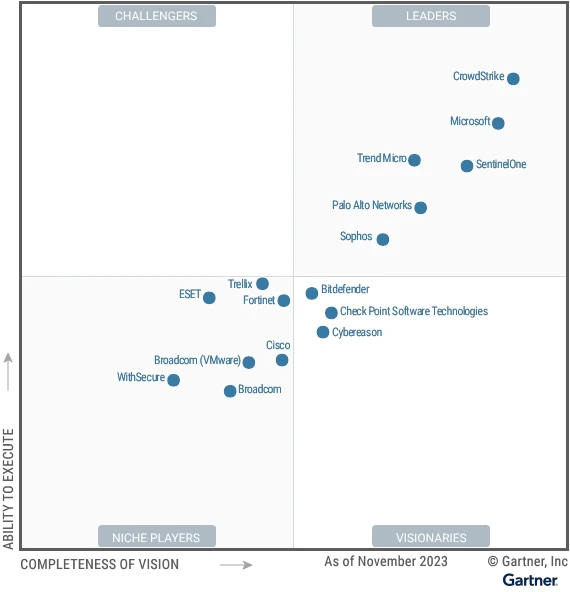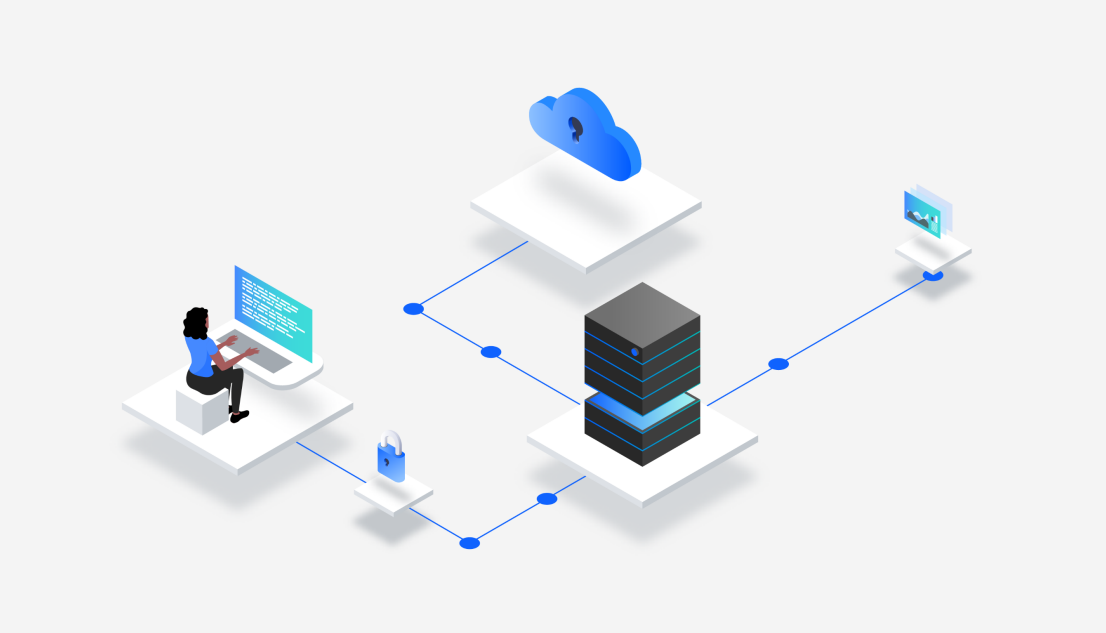In the age of ever-evolving cyber threats, having an effective endpoint detection and response (EDR) strategy is critical to protecting your business’s sensitive data and operations. One key question that businesses face when considering an EDR solution is whether to utilise one or multiple EDR platforms. In this article, we’ll explore the debate and argue that having one EDR platform is more effective for a security operations team’s skills development and threat hunting.
The Old School of Thought
Traditionally, businesses would deploy multiple anti-virus solutions to ensure that if one software fails to catch a threat, another would pick it up. This approach was based on the idea that signature-based detection of threats was not always effective and that having multiple tools would increase the chances of detecting and blocking malware. Signature-based detection involves comparing files on a system to known malware signatures. In other words, if a file on your system matches the signatures of known malware, then the antivirus software assumes that file to be a threat. Therefore, it was thought that having multiple antivirus software would improve the chances of identifying and blocking new or emerging malware that one tool might miss. However, as the threat landscape has evolved, it has become increasingly clear that anti-virus software is not enough to keep businesses safe from ever advancing attacks.
The Age of Endpoint Detection and Response
Today, businesses must adopt a new way of thinking about EDR. Rather than relying solely on anti-virus software, businesses need to implement a more sophisticated approach to detecting and responding to threats. This is where EDR comes in.
EDR moves beyond the traditional approach of anti-virus software by monitoring endpoints in real time, collecting and analysing data, and automatically responding to threats. This way, it is able to detect and respond to sophisticated attacks in real-time.
However, when it comes to implementing an EDR solution, another debate arises: One EDR vs. Multiple EDR, what makes the most effective detection and response?

Effective Detection and Response
One EDR Platform
Proponents of a single EDR platform argue that it is more effective for a security operations centre (SOC) team’s skills development and threat hunting. By using a single EDR platform, the SOC can focus their skills development in threat hunting on one platform and one query language. This approach allows SOC teams to be more proficient at detecting and responding to threats.
Another significant advantage of employing a single EDR platform is the enhanced ability to correlate data across different environments. This holistic view enables faster, more accurate threat detection and response, ultimately improving the overall cybersecurity posture of the organisation. With fewer tools to manage, security teams can focus more on analysing data and less on integrating disparate systems.
Furthermore, using one EDR platform may also help in streamlining the incident response process. Since all security data is in one place, teams can quickly escalate, triage, and investigate an incident.
Challenges
No single EDR platform is perfect or infallible. Some may be better at detecting certain types of threats but less effective against others. Using multiple EDR platforms can provide a more comprehensive detection mechanism as different platforms may have strengths in different areas. When selecting a single EDR platform, you may want to prioritise customisation over out-of-the-box capability because one size never fits all in this case.
Another challenge with a single EDR platform is a dependency on one vendor, which can limit flexibility and make it challenging to switch to a different solution if necessary.
Multiple EDR Platforms
For organisations lacking the skills to develop a depth of coverage with a single EDR platform, using multiple EDR solutions can serve as an alternative to ensure broader threat detection. The best use case of multiple EDR platforms is for organisations with specialist environments like IoT (Internet of Things) or OT (Operational Technology). In these cases, having multiple EDR platforms can provide targeted protection and deeper insights tailored to these unique environments. Without a specialist use case opting for a single, comprehensive EDR platform supported by a Managed Security Service Provider (MSSP) can simplify management and provide better depth of coverage than multiple EDRs without a skilled team supporting them.
Of course, using multiple EDR platforms can prevent vendor lock-in, offering greater flexibility and negotiating power. This approach allows organisations to leverage the unique strengths of each tool, tailoring their security posture to better fit specific needs.
Challenges
While there are benefits to using multiple EDR platforms, the drawbacks often outweigh these advantages, particularly when considering the complexities and costs involved. Managing multiple EDR solutions can vastly increase operational complexity as each platform may have its own interface, query language, and reporting mechanisms. This fragmentation necessitates additional training, leading to inefficiencies and making it harder for the SOC to maintain a streamlined incident response process. Time spent navigating disparate systems and manually correlating data could be better utilised for proactive threat hunting and strategic security improvements.
The financial implications of deploying multiple EDR platforms are significant. Each solution comes with its own licensing fees, which can quickly accumulate, putting a strain on budgets. Additionally, the ongoing costs of maintenance, updates, and support for more than one platform add to the financial burden. These resources could be more effectively allocated towards other critical areas of cybersecurity, such as employee training, infrastructure upgrades, or advanced threat intelligence.
Furthermore, managing multiple EDR platforms demands a broader range of specialised skills and training. SOC team members would need to become proficient in various systems, which could result in a steeper learning curve and longer onboarding times. This division of skills can dilute the team’s expertise and reduce overall efficacy in threat detection and response, ultimately weakening the organisation’s security posture.
Conclusion
In conclusion, while the debate between using one EDR platform versus multiple EDR toolsets continues, adopting a unified approach to EDR achieves the most effective Detection and Response. A single EDR platform offers a unified, streamlined approach that enhances SOC efficiency, simplifies incident response, and minimises operational complexity and costs.
That being said there are circumstances where multiple EDR platforms can provide more comprehensive threat coverage, such specialised environments containing OT.
Ultimately, businesses must carefully evaluate their specific needs and resources to determine the best EDR strategy for their unique threat landscape.
FAQs
What is Endpoint Detection and Response (EDR)?
Endpoint Detection and Response (EDR) is a security solution that monitors endpoints in real time, collecting and analysing data to detect and respond to threats. Unlike traditional antivirus software, EDR offers advanced threat detection through behavioural analysis, machine learning, and heuristic techniques, allowing for quicker and more accurate responses to sophisticated attacks.
Why is EDR important for modern businesses?
EDR is crucial for modern businesses due to the evolving nature of cyber threats. Traditional antivirus solutions are no longer sufficient to counter advanced persistent threats, zero-day vulnerabilities, and sophisticated malware. EDR provides real-time monitoring, comprehensive threat detection, and automated response capabilities, enhancing overall cybersecurity posture.
What are the benefits of using a single EDR platform?
Using a single EDR platform offers several benefits, including streamlined incident response, easier data correlation across environments, and a focus on a single query language for SOC teams. This unified approach enhances skills development, reduces operational complexity, and minimises costs associated with managing multiple tools.
What are the challenges of using multiple EDR platforms?
Deploying multiple EDR platforms can lead to increased operational complexity, higher costs, and a need for additional training. Managing different interfaces, query languages, and reporting mechanisms can fragment workflows, making it more challenging to maintain an efficient incident response process. Additionally, the financial burden of licensing, maintenance, and support for multiple platforms can strain budgets.
Are there any scenarios where using multiple EDR platforms is beneficial?
Yes, certain specialised environments like IoT (Internet of Things) and OT (Operational Technology) may benefit from using multiple EDR platforms. In these scenarios, targeted protection and deeper insights tailored to specific environments can be achieved.
What is the role of a Managed Security Service Provider (MSSP) in EDR?
A Managed Security Service Provider (MSSP) can offer expertise and resources to help businesses maximize the capabilities of a single EDR platform. MSSPs provide continuous monitoring, threat detection, incident response, and management, simplifying the overall security process and allowing businesses to focus on core activities while maintaining a robust security posture.


Leave a Reply